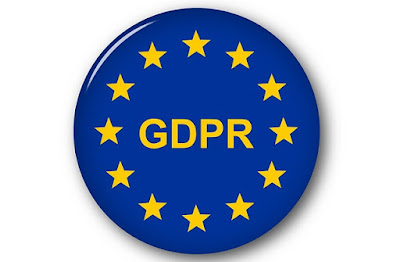What is GDPR?
- Use encryption to protect data at rest – and in motion! Ensure the security of your regulated data storage.
- Add layers of protection to your gateway ande-mail server to counter the “human factor” to reduce risk.
- Regularly check your infrastructure for weaknesses before someone else has a chance to find them.
- Perform penetration tests and security assessments. Know what is happening in your infrastructure.
Privacy means people know what they’re signing up for, in plain language, and repeatedly. I believe people are smart. Some people want to share more than other people do. Ask them. – Steve Jobs, Entrepreneur
There are Seven Principals of GDPR, let’s have a look
- Lawfulness, fairness, and transparency
- Data minimization
- Accuracy
- Purpose limitation
- Integrity and confidentiality (security)
- Storage limitation
- Accountability
The principles are at the center of the GDPR; they are the guiding principles of the regulation and compliant processing.
Data controllers are responsible for complying with the principles and letter of the regulation. Data Controllers are also accountable for their processing and must demonstrate their compliance. This is set out in the new accountability principle.
The full version of the seven principles gives more detail about the principles and their application.
Personal data shall be:
(a) Processed lawfully, fairly and in a transparent manner in relation to individuals (‘lawfulness, fairness, and transparency’).
(b) Collected for specified, explicit and legitimate purposes and not further processed in a manner that is incompatible with those purposes; further processing for archiving purposes in the public interest, scientific or historical research purposes or statistical purposes shall not be considered to be incompatible with the initial purposes (‘purpose limitation’).
(c) Adequate, relevant and limited to what is necessary for relation to the purposes for which they are processed (‘data minimization’);
(d) Accurate and, where necessary, kept up to date; every reasonable step must be taken to ensure that personal data that are inaccurate, having regard to the purposes for which they are processed, are erased or rectified without delay (‘accuracy’).
(e) Kept in a form which permits identification of data subjects for no longer than is necessary for the purposes for which the personal data are processed. Personal data may be stored for longer periods insofar as the personal data will be processed solely for archiving purposes in the public interest, scientific or historical research purposes or statistical purposes subject to the implementation of the appropriate technical and organizational measures required by the GDPR in order to safeguard the rights and freedoms of individuals (‘storage limitation’).
(f) Processed in a manner that ensures appropriate security of the personal data, including protection against unauthorized or unlawful processing and against accidental loss, destruction or damage, using appropriate technical or organizational measures (‘integrity and confidentiality’).
(g) If you are storing or processing EU users’ data then you have to be accountable for their data and it’s security and bound by the strict guideline stated under GDPR.
If you are running a blog or any other website which captures EU users’ data then you should be following the guidelines because as per the GDPR regulation you can’t store EU residents data outside Europe. If you can’t follow the guidelines, the simplest way to be compliant is by not storing and processing EU resident data outside. Or explicitly ask your EU’s traffic to provide their consent for processing their data.
Restrictions are not always a burden or a headache, you can still think of capitalizing out of GDPR regulation. We’ll explain it in some other time, We hope the above information has enhanced your understanding over What is GDPR. Do let us know your thoughts by commenting below.

